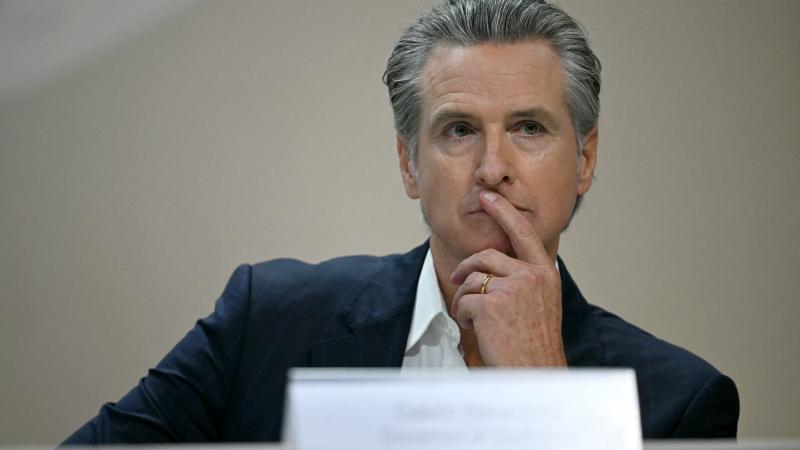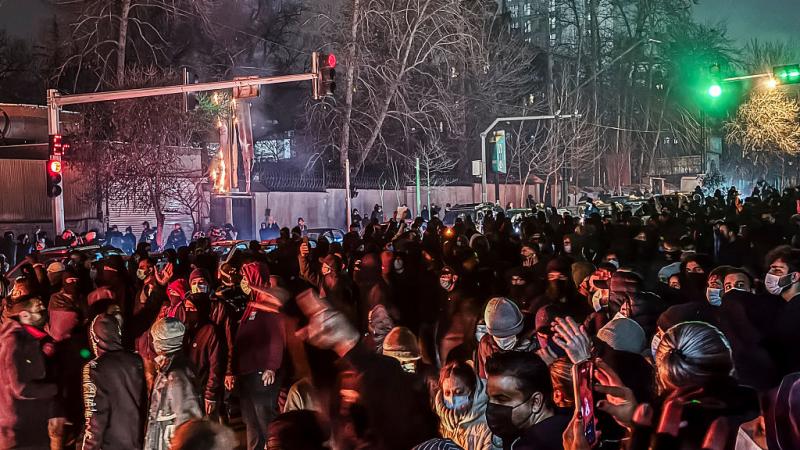Team Biden presses ahead with incandescent light bulb ban weeks after targeting gas stoves
Some skin, eye and biology experts warn that the modern light fixtures could lead to serious adverse health affects.
The Biden administration's campaign for clean energy has already put kitchen gas stoves in its sights, and is now pushing further into American homes to outlaw the purchase of a popular type of light bulb made famous by the inventor Thomas Edison.
The U.S. Energy Department confirmed in recent days it is pressing ahead to begin enforcing a ban Aug. 1 on the manufacture and retail sale of most incandescent light bulbs as the latest measure to meet President Joe Biden's “climate goals.” The move reverses a 2019 Trump administration decision.
Team Biden first signaled the ban was coming when the Energy Department made revisions made back in 2022 to its “Cost-Saving Energy Efficiency Standards.” The initial rules gave lightbulb manufacturers two and a half months to phase out incandescent bulbs before the 2023 ban as part of a purported initiative to combat climate change and cut Americans' energy costs.
However, according to a free market consumer group, the claim that switching from incandescents to LED's is the opposite of true. The group penned a letter to the Energy Dept. claiming the LED bulbs that the Biden Administration wants to de facto mandate “currently cost more than incandescent bulbs.” In addition, the group suggested the modern lighting is "inferior" for various functions like dimming.
On Amazon, a 4-pack of LED bulbs is listed for $10.19 while a 4-pack of incandescent bulbs currently goes for $10.39, amounting to a mere five cent difference per bulb and an apparent stretch from the DOE's implication that banning the old-fashioned lights would give Americans with financial relief.
Nonetheless, Energy Secretary Jennifer Granholm said the rules changes signal a "better and brighter future" and are “putting $3 billion back in the pockets of American consumers every year and substantially reducing domestic carbon emissions."
The ban will put an end to American reliance on a bulb that has been at the center of electric light since Edison got a patent for it in the 1880s.
While energy efficient light bulbs like LEDs are believed to save money long term, they cost significantly more for consumers at the point of purchase, adding new burdens on households already dealing with historically high inflation.
A report from the online site Lifehacker found the average cost of an LED light bulb ranges from $5 to $7 each, compared to $2 to $3 for an incandescent bulb.
The Biden administration's march to impose new restrictions on household goods -- including regulatory efforts earlier this year that could force many gas stoves from the market -- to force energy efficiency and lower carbon emissions was widely panned by Republicans in Congress.
"First, the Biden Admin went after gas stoves. Then, the Biden Admin went after washing machines. Now, the Biden Admin is going after light bulbs," Rep. Lance Gooden, R-Ga., tweeted. "Is there anything they won't try to ban?
The controversy surrounding incandescent versus energy-efficient lights has been brewing for a decade. Back in 2019, Trump withdrew an Obama-era “energy rationing mandate” that forced consumers to only be given the option to purchase energy-efficient lights, a move that critics say was no business of the federal government.
But now that Biden is slated to ax the Trump-era withdrawal and resurrect Obama’s clean energy mandates, experts around the world who’ve been subjected to similar crackdowns have warned of potential unforeseen consequences, including on the health front.
Researchers at the University of Exeter last year reported the shift to LED lights in European countries was causing “substantial biological impacts” across the continent, in part because such lights emit far more blue range waves.
"Another consequence of the recent increased whitening of artificial nighttime lighting emissions across much of Europe has been an increased likelihood of negative biological impacts of that lighting," they wrote. "We have focused on estimating these impacts on a few key responses (melatonin suppression, visibility of starlight, phototaxis, and behavior of bats). However, these impacts will be much more extensive than these examples, given that very many biological phenomena are spectrally dependent on and often particularly sensitive to blue emissions."
Such concerns date back a decade.
Back in 2014, the Daily Mail reported on British ophthalmology professor John Marshall who stocked up on incandescent bulbs prior to the EU’s energy crackdown, claiming that the modern light fixtures could increase the probability of going blind.
Another British professor, skin disease expert John Hawk, has raised warnings that modern light can lead to things like premature aging and skin cancer.
There also has been extensive research conducted over the years on the potential health pitfalls of LED lighting. A 2011 study by the University of California Irvine found LEDs contain hazardous materials such as lead, arsenic, nickel and other toxic metals.
















